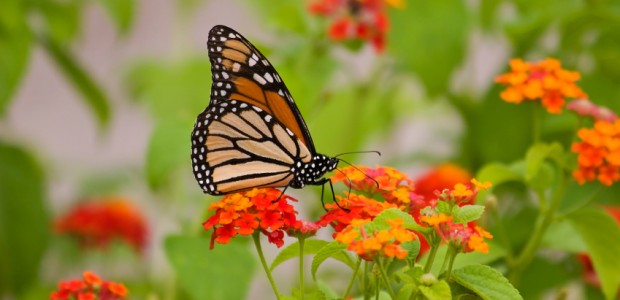A butterfly garden is a fun way to get you and your children excited about gardening. Not only is a great educational tool (learning about the life cycles) and good for the environment, but it also is a sight for sore eyes. Here is a quick start guide to creating your very own butterfly garden!
1. Research. As with any major project you have to research and make sure a butterfly garden will work in your area. A good way to do this is by simply observing your surrounding areas and watching to see what plants the butterflies are attracted to. Try to select plants native to your area for each growing season.
2. Plan your Garden. Deciding where you want to plant your garden can be a difficult task. Make sure to plant your garden in a sunny spot and keep in mind if the area has some gusty winds as well as hard rain. If your area has those kinds of conditions put up a barrier to help protect your plants (and your hard work)!
3. Choose “Host Plants”. Note from your research what the caterpillar (larvae) of the local butterflies eat. Host plants are very important when creating your garden because they not only provide a site for the butterfly to lay eggs but are also a food source for the caterpillars. Depending on the type of local butterflies you have will determine the host plants you should plant. Also be prepared for heavy munching on your host plants!
4. Choose “Nectar Plants”. Nectar plants serve as the food source for the butterfly so it is important to choose plants that will bloom throughout the season (especially mid to late summer) because that is when most butterflies are active. Flowers that have multiple florets and produce a lot of nectar are ideal. Some popular plants chosen are the Butterfly Bush and the Butterfly Weed but make sure to do your research to find what works best in your area.
5. Purchase plants or seeds. You can also get these plants and seeds online. Choose robust and healthy plants to give them a good start.
6. Plant. Make sure to keep new plants and seeds watered until plants are well-established or seeds germinate. Keep the weeds at bay, to give the plants a good chance.
7. Observe and enjoy. Watch for female butterflies laying eggs on host plants. Keep good records for yourself so you can know what to change for the next year! Most importantly enjoy!
Some additional notes. Like any other garden your butterfly garden will require some upkeep but keep in mind that butterflies do not like pesticides of any sort. You are going to have to keep away pests naturally, such as letting spiders and wasps do their thing or use insecticidal soaps or plant-based oils. Make sure that you leave some weeds for the caterpillars (some weeds are actually their favorite foods)! If you are short on space you can also create a butterfly garden solely using container plants.
Sources: tlc.com (http://tlc.howstuffworks.com/home/butterfly-garden4.htm)
